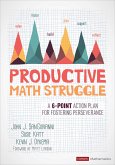Gerald W. Aungst
5 Principles of the Modern Mathematics Classroom
Creating a Culture of Innovative Thinking
Gerald W. Aungst
5 Principles of the Modern Mathematics Classroom
Creating a Culture of Innovative Thinking
- Broschiertes Buch
- Merkliste
- Auf die Merkliste
- Bewerten Bewerten
- Teilen
- Produkt teilen
- Produkterinnerung
- Produkterinnerung
Five Principles of the Modern Mathematics Classroom offers new ideas for inspiring maths students by building a more engaging and collaborative learning environment.
Andere Kunden interessierten sich auch für
![Teaching Mathematics in the Visible Learning Classroom, Grades K-2 Teaching Mathematics in the Visible Learning Classroom, Grades K-2]() John T. Almarode (USA James Madison University)Teaching Mathematics in the Visible Learning Classroom, Grades K-231,99 €
John T. Almarode (USA James Madison University)Teaching Mathematics in the Visible Learning Classroom, Grades K-231,99 €![The Formative 5 The Formative 5]() Francis M. FennellThe Formative 526,99 €
Francis M. FennellThe Formative 526,99 €![Concept-Based Mathematics Concept-Based Mathematics]() Jennifer WathallConcept-Based Mathematics46,99 €
Jennifer WathallConcept-Based Mathematics46,99 €![We Reason & We Prove for All Mathematics We Reason & We Prove for All Mathematics]() Fran ArbaughWe Reason & We Prove for All Mathematics31,99 €
Fran ArbaughWe Reason & We Prove for All Mathematics31,99 €![Your Mathematics Standards Companion, Grades 6-8 Your Mathematics Standards Companion, Grades 6-8]() Ruth Harbin MilesYour Mathematics Standards Companion, Grades 6-844,99 €
Ruth Harbin MilesYour Mathematics Standards Companion, Grades 6-844,99 €![The Imperfect and Unfinished Math Teacher [Grades K-12] The Imperfect and Unfinished Math Teacher [Grades K-12]]() Chase OrtonThe Imperfect and Unfinished Math Teacher [Grades K-12]30,99 €
Chase OrtonThe Imperfect and Unfinished Math Teacher [Grades K-12]30,99 €![Productive Math Struggle Productive Math Struggle]() John J. J. SanGiovanni (Howard Public School System)Productive Math Struggle46,99 €
John J. J. SanGiovanni (Howard Public School System)Productive Math Struggle46,99 €-
-
-
Five Principles of the Modern Mathematics Classroom offers new ideas for inspiring maths students by building a more engaging and collaborative learning environment.
Hinweis: Dieser Artikel kann nur an eine deutsche Lieferadresse ausgeliefert werden.
Hinweis: Dieser Artikel kann nur an eine deutsche Lieferadresse ausgeliefert werden.
Produktdetails
- Produktdetails
- Corwin Mathematics Series
- Verlag: SAGE Publications Inc
- Seitenzahl: 200
- Erscheinungstermin: 12. November 2015
- Englisch
- Abmessung: 251mm x 175mm x 15mm
- Gewicht: 424g
- ISBN-13: 9781483391427
- ISBN-10: 1483391426
- Artikelnr.: 41856792
- Herstellerkennzeichnung
- Libri GmbH
- Europaallee 1
- 36244 Bad Hersfeld
- gpsr@libri.de
- Corwin Mathematics Series
- Verlag: SAGE Publications Inc
- Seitenzahl: 200
- Erscheinungstermin: 12. November 2015
- Englisch
- Abmessung: 251mm x 175mm x 15mm
- Gewicht: 424g
- ISBN-13: 9781483391427
- ISBN-10: 1483391426
- Artikelnr.: 41856792
- Herstellerkennzeichnung
- Libri GmbH
- Europaallee 1
- 36244 Bad Hersfeld
- gpsr@libri.de
Gerald Aungst has nearly 30 years experience as a professional educator, specializing in design thinking, computer science, mathematics, gifted education, and digital technology. In his various roles as a classroom teacher, gifted support specialist, administrator, curriculum designer, and professional developer, he has worked to create a rich and vibrant learning culture. Gerald is a founder of AllAboutExplorers.com and GamifyED.net. Since 2016, Gerald has served as the gifted support and STEM teacher at Cheltenham Elementary School in the Cheltenham School District, Pennsylvania. He led the development and launch of the school's makerspace, and worked on the team developing the district's K-12 computer science curriculum. Gerald is also an adjunct faculty member at Holy Family University in Philadelphia and the University of Iowa. An experienced speaker, Mr. Aungst gave the keynote address at the 2016 EIRC Gifted and Talented Learning Fair. He was also a member of the keynote panel and a featured presenter at Digital Learning Day 2013. He has presented on a wide range of topics including curiosity, makerspaces, and gamification at many regional and national conferences, including ISTE, Educon, NAGC, PCTM, PETE&C, ITEC, FETC, and Carnegie-Mellon University. Gerald holds a bachelor's degree from Penn State University and a master of education degree from Widener University. You can find him on Twitter at @geraldaungst and on the web at www.geraldaungst.com.
Foreword by Mark Barnes
Preface
Acknowledgements
About the Author
Chapter 1. Math for the 21st Century and Beyond
Mathematics as Literacy
Mathematics as an Innovation Incubator
Goals of This Book
What Else to Expect
For PLC and Study Groups
Chapter 2. Classroom Environment: A Medium for Change
Why Classroom Culture?
Depth and Rigor
A Focus on the Practices
The 5 Principles of the Modern Mathematics Classroom
For PLC and Study Groups
Chapter 3. Conjecture
The Power of Mysteries
The Curious Brain
Problem Solving Is a Cycle, Not a Recipe
Grades K-3
Grades 2-5
Grades 4-7
Grades 6-9
Grades 8-12
Technology Integration for Conjecture: Case Studies
For PLC and Study Groups
Chapter 4. Communication
The Mysterious Mathemagical Mind Trick
First and Foremost, Communicate
Six Levels of Mastery
Grades K-3
Grades 2-5
Grades 4-7
Grades 6-9
Grades 8-12
Technology Integration for Communication: Case Study
For PLC and Study Groups
Chapter 5. Collaboration
But, Isn't That Cheating?
Recognizing, Defining, and Representing Problems
Grades K-3
Grades 2-5
Grades 4-7
Grades 8-12
Grades 6-9
Technology Integration for Collaboration: Case Study
For PLC and Study Groups
Chapter 6. Chaos
Features of Effective Math Instruction
Disorganized Chaos
Productive Struggle
Grades K-3
Grades 2-5
Grades 4-7
Grades 6-9
Grades 8-12
Technology Integration for Chaos: Case Studies
For PLC and Study Groups
Chapter 7. Celebration
Today, We Celebrate
Cautions About Celebration
Grades K-3
Grades 2-5
Grades 4-7
Grades 6-9
Grades 8-12
Digital Tools and Resources for Celebration
Technology Integration for Celebration: Case Study
For PLC and Study Groups
Chapter 8. Becoming a Problem-Solving Classroom
Transformation Is Possible
Self-Assessment
Goal-Setting and Planning
Maintaining Your Momentum
Appendix: Digital Tools
References
Index
Preface
Acknowledgements
About the Author
Chapter 1. Math for the 21st Century and Beyond
Mathematics as Literacy
Mathematics as an Innovation Incubator
Goals of This Book
What Else to Expect
For PLC and Study Groups
Chapter 2. Classroom Environment: A Medium for Change
Why Classroom Culture?
Depth and Rigor
A Focus on the Practices
The 5 Principles of the Modern Mathematics Classroom
For PLC and Study Groups
Chapter 3. Conjecture
The Power of Mysteries
The Curious Brain
Problem Solving Is a Cycle, Not a Recipe
Grades K-3
Grades 2-5
Grades 4-7
Grades 6-9
Grades 8-12
Technology Integration for Conjecture: Case Studies
For PLC and Study Groups
Chapter 4. Communication
The Mysterious Mathemagical Mind Trick
First and Foremost, Communicate
Six Levels of Mastery
Grades K-3
Grades 2-5
Grades 4-7
Grades 6-9
Grades 8-12
Technology Integration for Communication: Case Study
For PLC and Study Groups
Chapter 5. Collaboration
But, Isn't That Cheating?
Recognizing, Defining, and Representing Problems
Grades K-3
Grades 2-5
Grades 4-7
Grades 8-12
Grades 6-9
Technology Integration for Collaboration: Case Study
For PLC and Study Groups
Chapter 6. Chaos
Features of Effective Math Instruction
Disorganized Chaos
Productive Struggle
Grades K-3
Grades 2-5
Grades 4-7
Grades 6-9
Grades 8-12
Technology Integration for Chaos: Case Studies
For PLC and Study Groups
Chapter 7. Celebration
Today, We Celebrate
Cautions About Celebration
Grades K-3
Grades 2-5
Grades 4-7
Grades 6-9
Grades 8-12
Digital Tools and Resources for Celebration
Technology Integration for Celebration: Case Study
For PLC and Study Groups
Chapter 8. Becoming a Problem-Solving Classroom
Transformation Is Possible
Self-Assessment
Goal-Setting and Planning
Maintaining Your Momentum
Appendix: Digital Tools
References
Index
Foreword by Mark Barnes
Preface
Acknowledgements
About the Author
Chapter 1. Math for the 21st Century and Beyond
Mathematics as Literacy
Mathematics as an Innovation Incubator
Goals of This Book
What Else to Expect
For PLC and Study Groups
Chapter 2. Classroom Environment: A Medium for Change
Why Classroom Culture?
Depth and Rigor
A Focus on the Practices
The 5 Principles of the Modern Mathematics Classroom
For PLC and Study Groups
Chapter 3. Conjecture
The Power of Mysteries
The Curious Brain
Problem Solving Is a Cycle, Not a Recipe
Grades K-3
Grades 2-5
Grades 4-7
Grades 6-9
Grades 8-12
Technology Integration for Conjecture: Case Studies
For PLC and Study Groups
Chapter 4. Communication
The Mysterious Mathemagical Mind Trick
First and Foremost, Communicate
Six Levels of Mastery
Grades K-3
Grades 2-5
Grades 4-7
Grades 6-9
Grades 8-12
Technology Integration for Communication: Case Study
For PLC and Study Groups
Chapter 5. Collaboration
But, Isn't That Cheating?
Recognizing, Defining, and Representing Problems
Grades K-3
Grades 2-5
Grades 4-7
Grades 8-12
Grades 6-9
Technology Integration for Collaboration: Case Study
For PLC and Study Groups
Chapter 6. Chaos
Features of Effective Math Instruction
Disorganized Chaos
Productive Struggle
Grades K-3
Grades 2-5
Grades 4-7
Grades 6-9
Grades 8-12
Technology Integration for Chaos: Case Studies
For PLC and Study Groups
Chapter 7. Celebration
Today, We Celebrate
Cautions About Celebration
Grades K-3
Grades 2-5
Grades 4-7
Grades 6-9
Grades 8-12
Digital Tools and Resources for Celebration
Technology Integration for Celebration: Case Study
For PLC and Study Groups
Chapter 8. Becoming a Problem-Solving Classroom
Transformation Is Possible
Self-Assessment
Goal-Setting and Planning
Maintaining Your Momentum
Appendix: Digital Tools
References
Index
Preface
Acknowledgements
About the Author
Chapter 1. Math for the 21st Century and Beyond
Mathematics as Literacy
Mathematics as an Innovation Incubator
Goals of This Book
What Else to Expect
For PLC and Study Groups
Chapter 2. Classroom Environment: A Medium for Change
Why Classroom Culture?
Depth and Rigor
A Focus on the Practices
The 5 Principles of the Modern Mathematics Classroom
For PLC and Study Groups
Chapter 3. Conjecture
The Power of Mysteries
The Curious Brain
Problem Solving Is a Cycle, Not a Recipe
Grades K-3
Grades 2-5
Grades 4-7
Grades 6-9
Grades 8-12
Technology Integration for Conjecture: Case Studies
For PLC and Study Groups
Chapter 4. Communication
The Mysterious Mathemagical Mind Trick
First and Foremost, Communicate
Six Levels of Mastery
Grades K-3
Grades 2-5
Grades 4-7
Grades 6-9
Grades 8-12
Technology Integration for Communication: Case Study
For PLC and Study Groups
Chapter 5. Collaboration
But, Isn't That Cheating?
Recognizing, Defining, and Representing Problems
Grades K-3
Grades 2-5
Grades 4-7
Grades 8-12
Grades 6-9
Technology Integration for Collaboration: Case Study
For PLC and Study Groups
Chapter 6. Chaos
Features of Effective Math Instruction
Disorganized Chaos
Productive Struggle
Grades K-3
Grades 2-5
Grades 4-7
Grades 6-9
Grades 8-12
Technology Integration for Chaos: Case Studies
For PLC and Study Groups
Chapter 7. Celebration
Today, We Celebrate
Cautions About Celebration
Grades K-3
Grades 2-5
Grades 4-7
Grades 6-9
Grades 8-12
Digital Tools and Resources for Celebration
Technology Integration for Celebration: Case Study
For PLC and Study Groups
Chapter 8. Becoming a Problem-Solving Classroom
Transformation Is Possible
Self-Assessment
Goal-Setting and Planning
Maintaining Your Momentum
Appendix: Digital Tools
References
Index

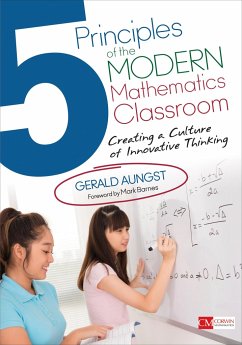
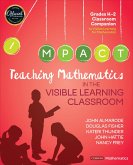
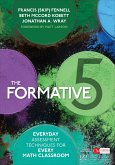
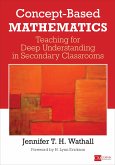
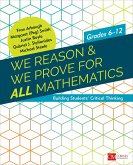
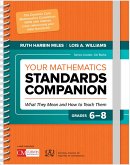
![The Imperfect and Unfinished Math Teacher [Grades K-12] The Imperfect and Unfinished Math Teacher [Grades K-12]](https://bilder.buecher.de/produkte/62/62817/62817324m.jpg)
